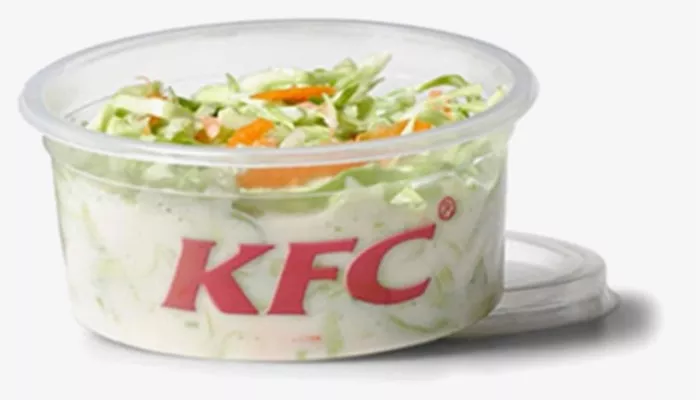KFC, known for its finger-lickin’ good fried chicken, has a diverse menu that includes various sides, desserts, and beverages.
Among the popular items traditionally offered at many fast-food chains is coleslaw, a classic side dish made from finely shredded raw cabbage and dressed most commonly with vinaigrette or mayonnaise. However, KFC has made the controversial decision to remove coleslaw from its menu in several regions. This article explores the reasons behind this decision, examining customer preferences, menu strategy, and operational considerations.
Introduction to KFC’s Menu Strategy
KFC has built its reputation on delivering high-quality fried chicken and a selection of complementary sides that enhance the overall dining experience. The brand is known for its unique blend of 11 herbs and spices that sets its chicken apart from competitors. Over the years, KFC has expanded its menu to include various items such as mashed potatoes, biscuits, corn on the cob, and mac and cheese. However, coleslaw has been a staple side dish that many customers have come to expect at fast-food restaurants.
In recent years, KFC has faced challenges in maintaining a consistent menu that appeals to a broad audience while also adapting to changing consumer preferences. This balancing act has led to significant changes in their offerings. The removal of coleslaw from certain locations has raised eyebrows and sparked discussions among loyal customers who enjoyed this classic side.
SEE ALSO: The 7 Major Countries with KFC Franchises
Reasons for The Removal of Coleslaw
Several factors contribute to KFC’s decision to discontinue coleslaw in specific markets. These factors include customer preferences, operational efficiency, and strategic menu planning.
1. Changing Customer Preferences
Consumer tastes are continually evolving. Many fast-food chains have observed a shift towards healthier eating habits.
While coleslaw is often considered a healthier option compared to fries or other fried sides, it may not align with the current trends that favor lighter fare or more innovative side dishes.
Health Trends: As consumers become more health-conscious, they often seek options that are perceived as healthier or more nutritious. While coleslaw can be made with fresh ingredients, some customers may view it as less appealing compared to alternatives like salads or vegetable sides.
Demand for Variety: Customers are increasingly looking for variety in their dining experiences. Fast-food chains are responding by introducing new and exciting side options that cater to diverse tastes. This trend may lead to the removal of less popular items like coleslaw in favor of more innovative offerings.
2. Operational Considerations
The operational aspects of running a fast-food restaurant also play a significant role in menu decisions. KFC must consider factors such as food preparation time, storage requirements, and waste management when determining which items to keep on the menu.
Preparation Complexity: Coleslaw requires specific preparation steps, including shredding cabbage and mixing it with dressing. This process can be time-consuming compared to other sides that require less preparation or can be pre-packaged.
Storage Challenges: Fresh ingredients like cabbage have a limited shelf life. If demand for coleslaw is low in certain locations, this can lead to increased waste as unsold products spoil before they can be used.
Consistency Across Locations: KFC aims to provide a consistent experience across all its locations. If certain areas see low sales of coleslaw while others do not, it may make sense for the company to remove it from the menu entirely in those lower-performing regions.
3. Strategic Menu Planning
KFC’s decision-making process regarding its menu is also influenced by broader strategic considerations aimed at enhancing customer satisfaction and driving sales.
Focus on Core Offerings: By streamlining the menu and focusing on core offerings like fried chicken and popular sides (such as mashed potatoes and biscuits), KFC can ensure that it delivers high-quality items consistently across all locations.
Experimentation with New Items: The removal of coleslaw allows KFC to experiment with new side dishes that may resonate better with current customer preferences. This approach keeps the menu fresh and exciting while also allowing for seasonal or limited-time offerings that can drive traffic to stores.
Marketing Strategy: The removal of certain items can also be part of a broader marketing strategy aimed at repositioning the brand or appealing to new demographics. By focusing on trending flavors or ingredients, KFC can attract different customer segments looking for unique dining experiences.
Customer Reactions
The decision to remove coleslaw from KFC’s menu has elicited mixed reactions from customers. Many loyal fans have expressed disappointment over the loss of this classic side dish, citing its role as a refreshing complement to fried chicken meals. Others have welcomed the change, appreciating the opportunity for new side options that align better with their tastes.
Social Media Feedback: Customers often take to social media platforms to voice their opinions on menu changes.
Discussions about KFC’s removal of coleslaw have generated significant engagement among fans who reminisce about their experiences with this dish while calling for its return.
Alternative Side Options: In response to customer feedback about missing coleslaw, KFC has introduced various alternative sides that aim to fill the gap left by its absence. These options may include salads or other vegetable-based dishes designed to appeal to health-conscious consumers.
Conclusion
KFC’s decision not to offer coleslaw reflects a complex interplay of changing customer preferences, operational considerations, and strategic menu planning. As consumer tastes evolve towards healthier options and greater variety, KFC must adapt its offerings accordingly while maintaining its commitment to quality and consistency across all locations.
While some customers may lament the loss of coleslaw from their favorite fast-food chain’s menu, others may appreciate the opportunity for new culinary experiences through innovative side dishes. Ultimately, KFC’s focus remains on delivering delicious meals that satisfy its diverse customer base while navigating the challenges of an ever-changing food landscape.
Related topics:
- What Are The Unique Flavors of Jollibee’s Chickenjoy?
- When Does Mcdonalds Stop Serving Mcflurries?
- The 6 Best Fried Chicken Fast Food

